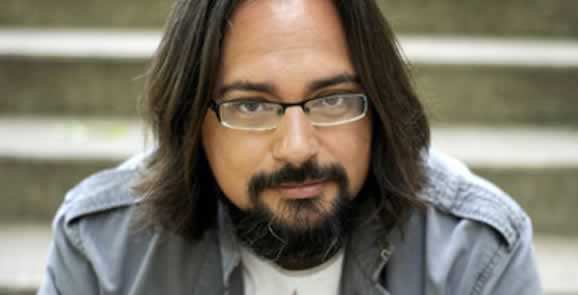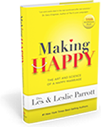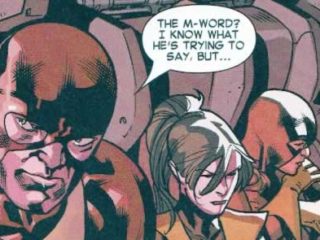I asked Todd Agnew what I thought was an easy question, “Why did you decide you wanted to do a Christmas album at this time in your career?” I wasn’t prepared for his answer, “The weird thing is I didn’t.”
As Agnew and I both break into laughter he explains, “A Christmas album (Do You See What I See) was not on the list of my career-to-do things. It wasn’t something that I ever really wanted to do. Last October I was studying the story of the wisemen and felt God was challenging me by saying, ‘Are you willing to prepare like they did to encounter Christ at Christmas? They (the wisemen) studied really hard. They journeyed and brought special gifts.’
“It was like He was saying, ‘you shop at the last minute, and run up to see your family and say oh, and Jesus thank you for coming. That is your encounter at Christmas.’ I (thought) we prepare every other side but we don’t take a lot of time to prepare spiritually for Christmas. We work much more on our Christmas music at church then we do on preparing our hearts. That was an indictment on me so I told the Lord I was going to spend every morning from October to Christmas studying the Christmas story,” says Agnew.
He continues, “I am the church kid. I know the Christmas story. When I was little I had to memorize the story in Luke chapter two to recite it before I could have my presents on Christmas morning. I was thinking, ‘Lord I am going to do this but you are going to have to do something here because I have read this thing thousands of times.”
When you listen to the tremendous vocal and instrumental arrangements that Agnew put together for his album Do You See What I See you will agree that God more than answered his prayer. The singer/songwriter has created a wonderful musical worthy of a King. There are breathless vocal performances by Joy Whitlock, Shelley Jennings and Christy Nockels. There are bold new interpretations by Mike Weaver, Michael O’Brien and Anthony Evans. Agnew’s own deep vocals often provide the earthiness required to portray the magi and innkeeper.
Agnew says, “This story came to life like the Bible hasn’t for me yet. This just exploded off the page. I started realizing that these are real people, encountering a real God. It’s not a little three-point sermon; it’s messy. When God jumps into the mix a lot of times it gets messier but it is beautiful in the end. That was the idea for the record.”
From October of 2005 until June of 2006 the songwriter committed himself to studying all that he could find pertaining to the coming of the messiah and the nativity. What emerged from that intensive study is the record Do You See What I See. We should tell you at this juncture that it is not by accident that the album title sounds a lot like the song Do You Hear What I Hear? In fact it is by mistake! Just as this scribe often has trouble remembering song titles, Agnew mistook the name of the traditional tune as Do You See What I See? Some might call it a mistake but when you read how the music evolved you may be more apt to talk about God’s providence.
“We always look at Christmas from 2000 years later. We know the whole story and we put a little polish and varnish on the nativity scene. That’s not how it happened. Mary had eight sentences from an angel and was supposed to be the mother of God. Joseph had his girl come and tell him that she was pregnant with someone else’s kid. His heart was broken. The shepherds were probably cussing out in the field and running for cover as the angels jumped into the sky. It’s this crazy time, and I think that is what it is probably like for most of us when God engages our lives,” he says.
Agnew says, “This really started coming to life for me and I wanted to just try and take my shot at telling the story as it happened to real people, not as if it was this polished thing with little perfect people.”
Agnew tries to get inside the mind of Joseph and says if it was him, “I would be mad at God. (I would say) You could have sent the angel a week earlier and all of this would have been avoided. You broke my heart and you did it on purpose. You aren’t explaining yourself.” When you put it into perspective how many times have we questioned God about things in much the same manner?
Then Agnew states something we all know to be true of Joseph before asking a monumental question. “He is supposed to be the (earthly) father of the Son of God. How do you do that? There are no James Dobson books on how to raise the Messiah,” says Agnew.
“Joseph started breaking my heart and song after song started pouring out. Eventually this album came out of it,” he says.
Last summer when Todd Agnew first walked into the studio to record Do You See What I See he was greeted by Christmas lights strung everywhere and a big Christmas tree. “My label and management are just amazing,” he says.
Agnew makes the distinction that he didn’t set out to record a Christmas record but he was creating an album about the Christmas story. To do so he enlisted the help of some very special friends. He says, “It was really exciting to have some of my dear friends and people who I really expect as ministers to be a part of the record.”
One of those friends is Mike Weaver from Big Daddy Weave who portrays Simeon through the song, “He Is Called Jesus”. “The story of Simeon is really special to me. A lot of times those stories are the ones that we have a difficult time telling. I was really wrestling with this. While I was on tour with Big Daddy Weave, Mike and I would just sit on the bus and talk about Simeon. Finally I got the song done and it was really natural to say, ‘Hey Weaver I want you to be a part of this.’ It is a powerful story,” says Agnew.
Agnew says he cried the first time he listened to the mix of Christy Nockels singing the “Magnificat” as Mary. “Christy and Nathan (her husband) have always had this powerful ministry with Watermark and been great worship leaders,” he says.
Agnew raves about the contributions of Anthony Evans backed by a gospel choir from Memphis who provided the angelic praises. “I love music like that (“Glory To God”). It was really fun to write a track like that and then to watch Anthony bring it to life,” he says.
Shelley Jennings took Elizabeth’s lullaby “Sleep Well” and in Agnew’s words, “It just became this beautiful, beautiful song which is what I had hoped for. Shelley just knocked that out.”
Joy Whitlock gave Agnew everything he was looking for and more on the song, “No Room”. She is a new artist who will be introducing her own CD in 2007. Agnew says of the Memphian, “It (“No Room” gives everybody a taste of what she can do.”
Agnew says that working on the CD transformed his life much more than he expected it would. “It became much more personal after a song was done. When you are a Christian musician or a modern American Christian, we can get so callous to God. We talk about him all the time and all of the stories are the same. I have been a Christian for a long time and this has been like a breath of fresh air, a taste of sweet fresh water for me. To have something that I thought about very intimately explode into life for me has been really powerful and encouraging. God still does that. He is not just waiting for your one youth camp moment when you walk down an aisle. He still plans to engage in these powerful ways. Doing this study and having God bring it to life for me (is a reminder) that God has that same plan for the rest of the Bible. I am really looking forward to what he is going to do in the rest of my life whether or not it turns into any songs.
Copyright © 2006 Joe Montague, exclusive rights reserved. This material may not be redistributed without prior written permission from Joe Montague. Joe Montague is an internationally published freelance journalist / photographer.











